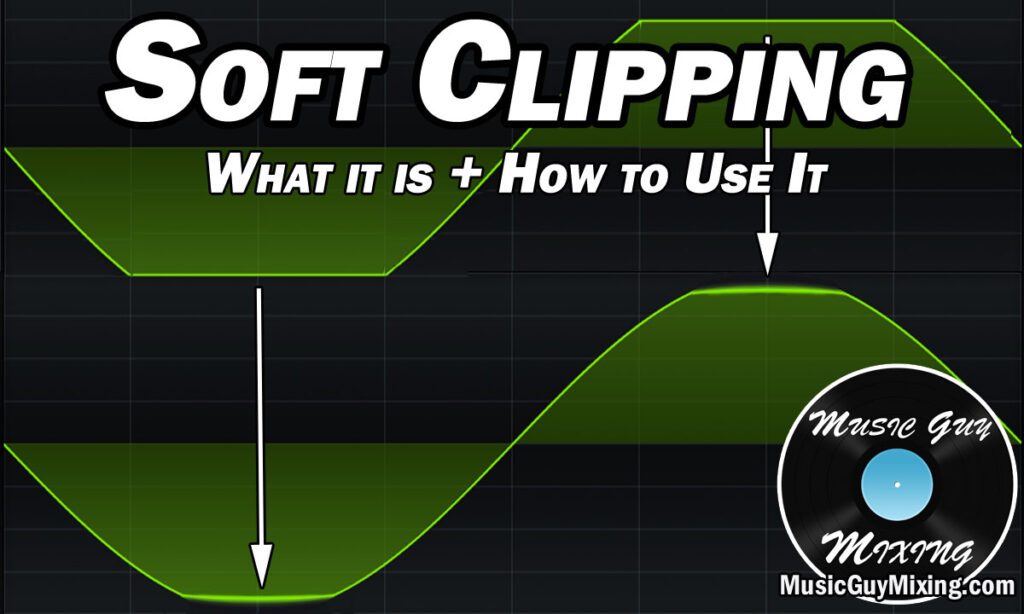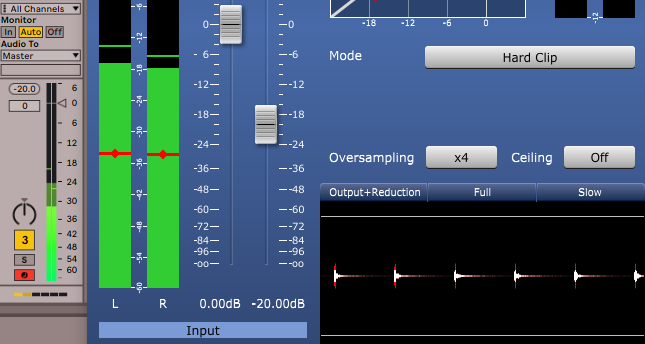Clippers are types of dynamic altering plugins useful for a handful of purposes, most commonly to alter transients for the purpose of attaining more volume out of a track or mix.
There are soft clippers and hard clippers, and each varies in how they process those transients. Let’s compare the soft clipper vs hard clipper now.
Soft Clipper Vs Hard Clipper

We’ll begin with the soft clipper.
Soft Clipper
Thinking back to my overview on what is soft clipping, a soft clipper applies saturation to gently round off the transient peaks of audio:

This is useful in the audio mastering stage when the idea is to make a mix competitively loud. We apply gain to the mix until it reaches that 0dB that is the ceiling in digital audio.
By adding some soft clipping, the basic idea is we push the signal into the point of clipping but we round off the tops of the transients so that the effect isn’t that sharp distortion that we normally associate with clipping.
This nets us a bit or a lot more volume, depending on how hard we drive it. Izotope Ozone‘s plugin which is there maximizer/limiter has a soft clip feature which adds some saturation at different points below the threshold.

Used conservatively, soft clipping is a transparent way to get a little more volume out of a track or a mix.
Hard Clipper
A hard clipper doesn’t smooth or round anything; it literally shaves the peaks of audio at the threshold of your choosing.

Unlike a limiter which reacts to peaks and compresses them at an infinite ratio, a hard clipper disrupts the signal before it hits those peaks. This makes a hard clipper faster than the fastest limiter.
Like a soft clipper, a hard clipper can be used to get more volume out of a mix, but in a more roundabout way.
You can use a hard clipper to more or less transparently reduce the peaks of certain tracks in your mix, thus giving you more headroom when these tracks are summed with the rest of your mix on the main mix bus.
Drive a hard clipper TOO hard and you’ll completely swallow up the transient and create some high frequency distortion.
Keep it conservative, just reducing the peaks by a few dB on tracks with pronounced peaks like the kick and snare, and you can easily create more headroom with no tradeoff.
Limiting and soft clipping can THEN be applied in the mastering stage to take better advantage of that extra headroom to create a louder master of your song.
So in a way, both soft clippers AND hard clipper plugins can work together to create a louder mix more cleanly.
